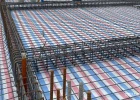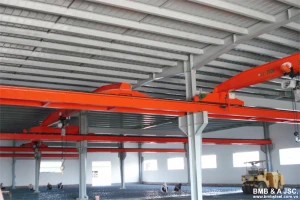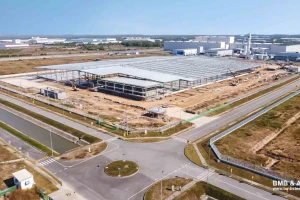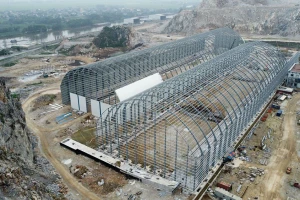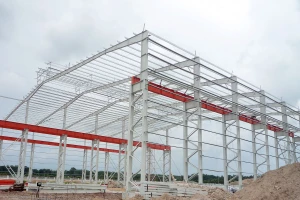What is a bridge crane? Type, pros & cons, application of bridge crane
Bridge cranes are essential equipment for lifting and transporting heavy loads in industrial environments. With their robust design, adaptability, wide range of applications, bridge cranes are a critical solution for manufacturing plants, warehouses, etc. Explore with BMB Steel what is a bridge crane, the types, benefits, drawbacks, common uses of bridge cranes to understand their role in modern industries.
1. What is a bridge crane?

A bridge crane (also known as an overhead bridge crane) is a type of crane fixed in place and supported by beams with a movable bridge that travels along the overhead structure. This allows the crane to move loads across 3 dimensions: left and right, up and down and across the operating area.
Bridge cranes are heavy-duty equipment designed for material handling with impressive lifting capacities. They are operated manually or via control systems, such as a wired pendant or wireless remote or cabin control. Bridge cranes are primarily used in industrial settings to facilitate the transport of materials in multiple directions, making them essential for manufacturing processes, storage operations, and loading or unloading goods.
2. Bridge crane components
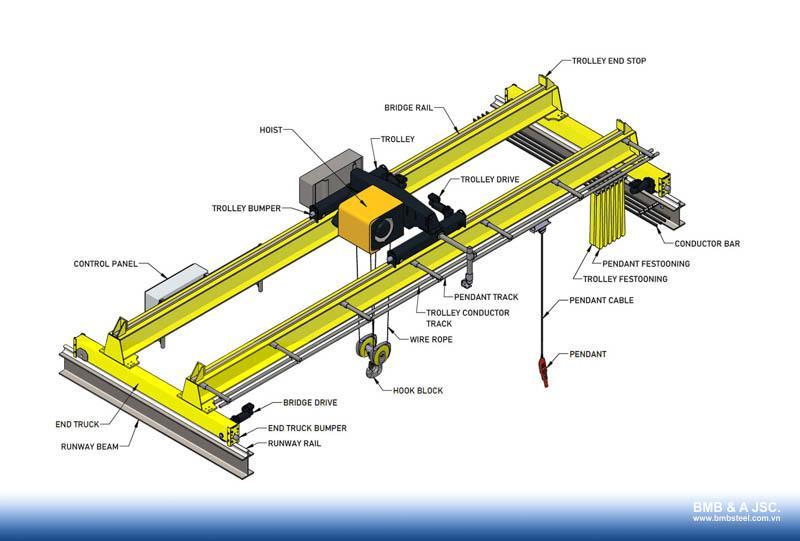
- Hoist: The hoist is responsible for lifting, holding, raising, or lowering the load. It operates using either a wire rope or chain and can be powered manually, electrically, or with compressed air.
- Trolley: The trolley holds the hoist and enables horizontal movement along the crane bridge.
- Bridge: The bridge is a structural beam spanning the width of the building, connecting the runways. It is the main support for the trolley and hoist, allowing them to move forward and backward. Bridges can be single girder (one beam) or double girder (two beams) and are often made from rolled steel or fabricated into a box beam design.
- Runway: The runway is the track system on which the bridge crane moves vertically along the bays. Typically integrated into the building's structure as beams, an overhead bridge crane system usually includes two runways.
- Runway rail or tracks: These rails are installed on top of the runway beams and serve as the path for the crane’s movement. Top-running cranes utilize ASCE or railroad rails, while gantry cranes may have floor-mounted rail systems.
- End Trucks: End trucks are positioned on either side of the bridge and use wheels to move the bridge along the runway. Depending on the crane’s capacity, an end truck may have 2, 4, 8 wheels.
- Bumpers: These components absorb energy and reduce impact when the crane or trolley reaches the end of its travel path. They ensure a controlled stop, protecting the crane’s components from damage. Bumpers can be installed on the bridge, trolley, runway stop.
- Controls: The controls, housed in a panel on the crane or hoist, allow the operator to manage the crane’s movement. Operators use a pendant or remote radio console to control the drive and hoist motors, with Variable Frequency Drives (VFDs) often used for precise speed adjustments.
- Electrification: Power is supplied to the crane through insulated conductor bars or festoon systems (flat cables) running from the building’s electrical supply to the crane.
3. Types of bridge cranes
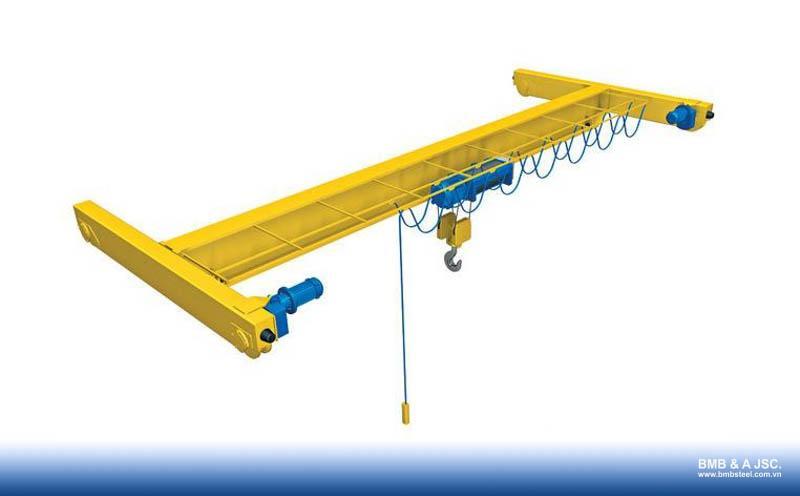
- Single girder overhead cranes: feature 1 lifting device (hoist) and a single bridge beam. It operates on 2 end trucks that move along a pair of rails installed on two runway beams. The trolley, which carries the hoist, travels along the bridge and facilitates material transportation. This type of crane has a load capacity of up to 50 tons, commonly used for lighter-duty applications.
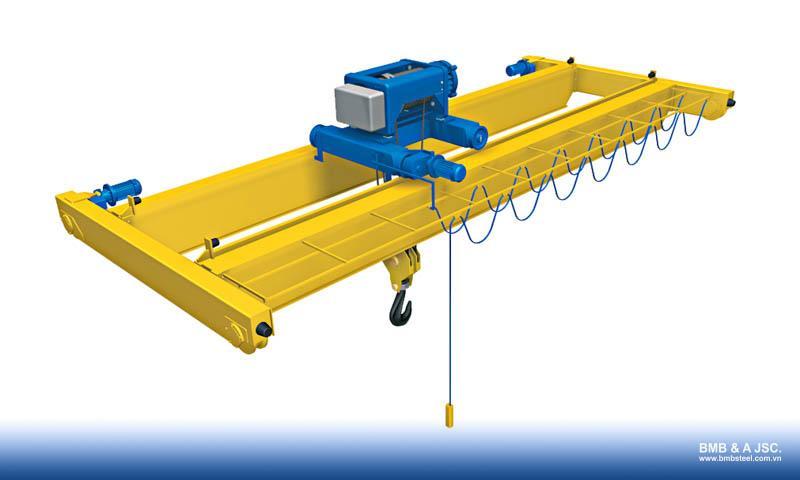
- Double girder overhead cranes: similar to a single girder crane but features 2 bridge beams (girders) and often 2 trolleys. This design allows the crane to handle heavier loads, with capacities of up to 100 tons. However, it requires more overhead space compared to the single girder crane, making it suitable for industrial applications that demand heavy-duty lifting.
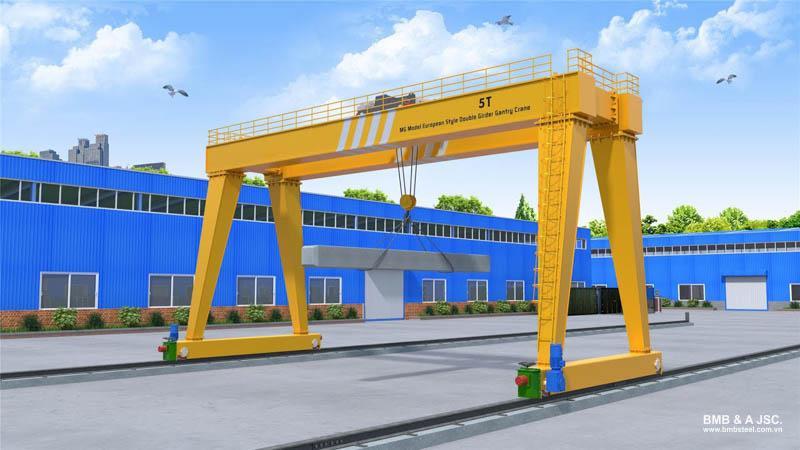
- Gantry cranes: Gantry cranes function similarly to bridge cranes but differ in their support structure. Instead of relying on suspended runway beams, gantry cranes are supported by legs that travel on fixed rails embedded in or laid on the floor. These cranes are often used in outdoor applications, such as shipyards, railyards, construction sites, or where overhead beams and columns are impractical. Gantry cranes are also suitable for spaces with limited overhead clearance.
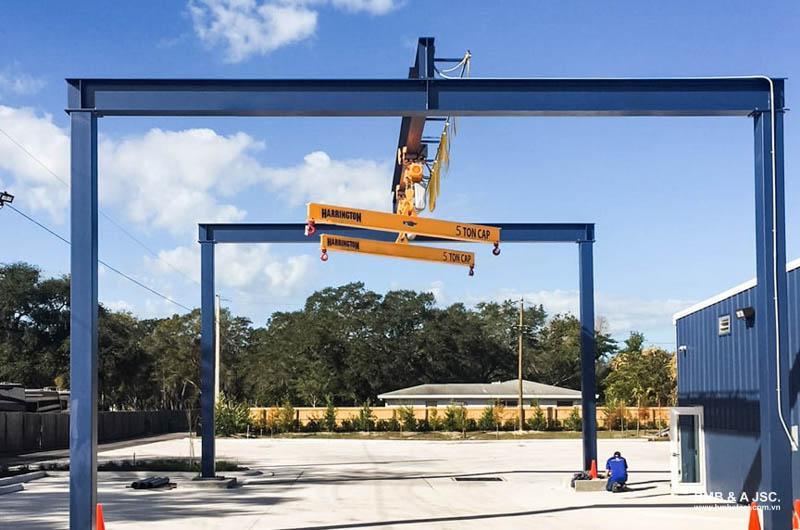
- Monorail cranes: are designed for specialized tasks, often found in production or assembly lines. They use a trolley to move the hoist along a single path, typically mounted to an I-beam. Unlike bridge or gantry cranes, monorail cranes operate along a straight or curved track, sometimes featuring switches, branches, or elevation changes.
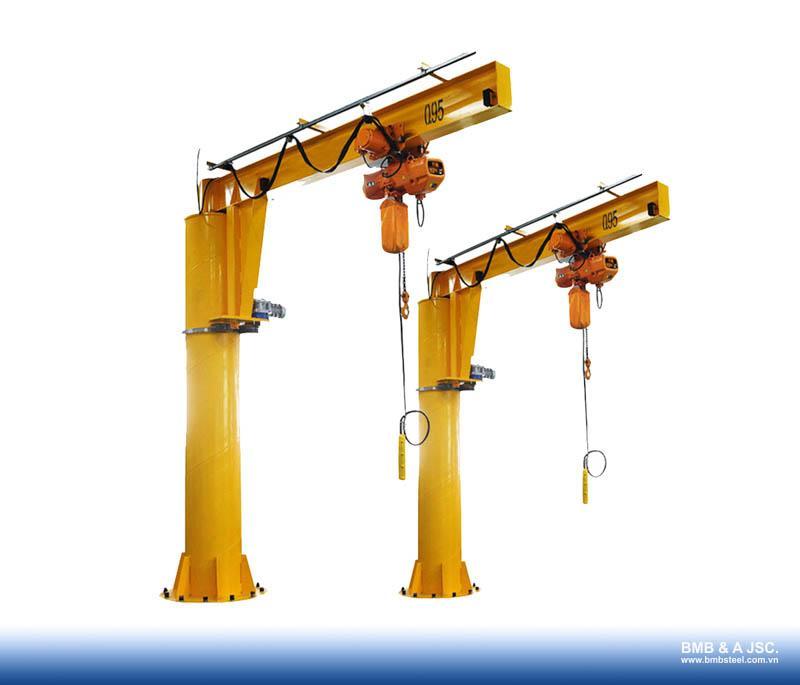
- Jib cranes: are versatile and space-saving systems that do not require a runway or track. They can be freestanding or mounted on columns or walls. With rotation capabilities ranging from 180° to 360°, jib cranes are ideal for moving or maneuvering items within confined areas. They are cost-effective and can lift several tons, making them well-suited for assembly tasks or localized lifting operations.
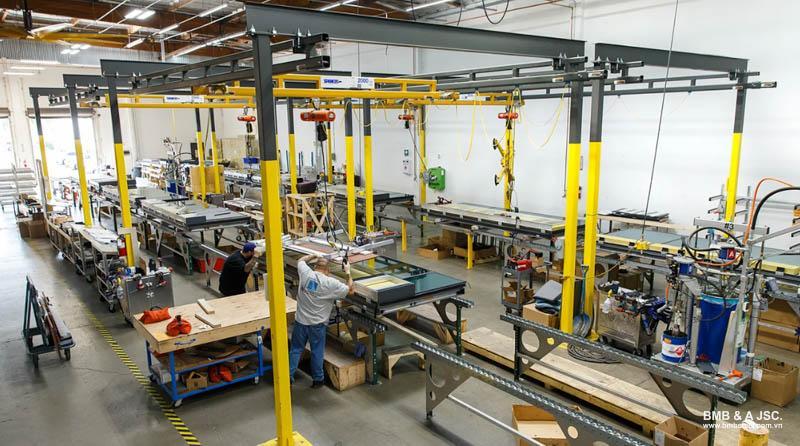
- Workstation cranes: Workstation cranes are designed for ergonomic material handling in smaller work areas. They are typically lighter-duty systems with lifting capacities ranging from 150 lbs. to 2 tons. These cranes are ideal for repetitive lifting tasks, improving worker productivity, streamlining workflows in environments where precision and efficiency are critical.
4. Advantages and disadvantages of bridge cranes
4.1. Advantages of bridge cranes
- Versatility and customization: Bridge cranes are highly adaptable, with various types and designs available to suit specific applications. Their customization options allow them to handle diverse tasks efficiently and precisely.
- Heavy lifting capabilities: Top-running bridge cranes are ideal for heavy lifting operations, large spans, long lifts. Supported by the building structure or runway support columns, they offer unrestricted lifting capacities.
- Efficiency: Bridge cranes significantly enhance productivity by automating the lifting and movement of materials, eliminating the need for multiple workers or tow motors. They can work 2-3 times faster than manual labor, streamlining operations in manufacturing, warehousing, other industrial facilities.
- Improved safety: Overhead cranes improve workplace safety by reducing the risk of accidents associated with manual material handling. Operators can control the crane remotely using a radio or pushbutton station, allowing them to set up loads and stay at a safe distance.
- Minimized material damage: Bridge cranes handle materials with precision, reducing the likelihood of damage compared to manual lifting or other equipment like forklifts.
4.2. Disadvantages of bridge cranes
- Space requirements: Bridge cranes need substantial overhead space, which can make them unsuitable for facilities with low ceilings or limited vertical clearance. In such cases, under-running overhead cranes are a better alternative.
- Higher costs: Bridge cranes tend to be more expensive to purchase, install, operate compared to other types of cranes.
- Reduced mobility: Bridge cranes are fixed systems and lack the mobility needed to serve multiple locations within a facility. If flexibility and mobility are essential, workstation cranes or jib cranes are more suitable options. These can be mounted on the floor, ceiling, wall, providing versatility to move materials across different areas.
5. Applications of bridge cranes
Bridge cranes are versatile material-handling systems widely used across various industries to improve efficiency and productivity.
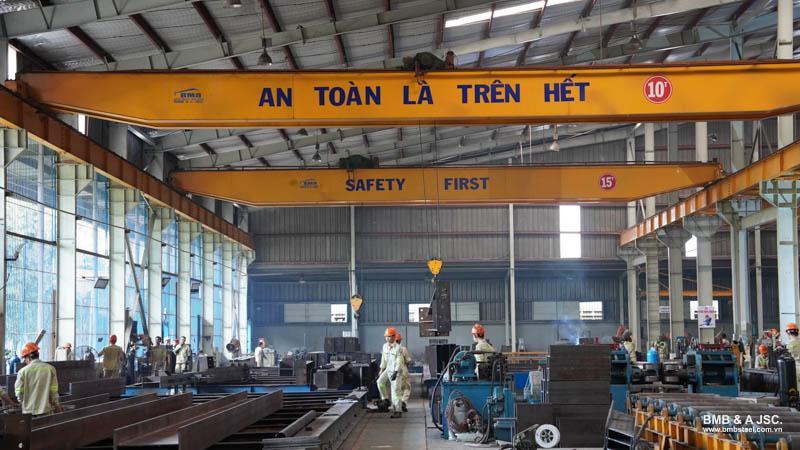
- Assembly: Bridge cranes are utilized to move products seamlessly through different stages of the production process, ensuring efficiency and precision.
- Transportation: Finished products can be efficiently transported from the production floor to vehicles, such as open trailers, for shipping or delivery.
- Staging: Bridge cranes hold work-in-progress items, preparing them for additional production steps or processes.
- Storage: They are ideal for moving heavy items into or out of storage areas, streamlining inventory management.
- Warehousing: Bridge cranes facilitate the movement of heavy goods between docks and storage areas, simplifying logistics and reducing manual labor.
Bridge cranes are lifting equipment that optimize productivity, reduce costs, and ensure safety in industrial production. By understanding their components, types, advantages, and limitations, you can select the most suitable crane for your needs, enhancing productivity while ensuring workplace safety and operational efficiency.
We hope this article from BMB Steel has provided you with a clear understanding of what is a bridge crane, valuable insights about their features and applications. If you have any further questions, feel free to contact us for expert advice and support in the field of pre-engineered steel building construction.










